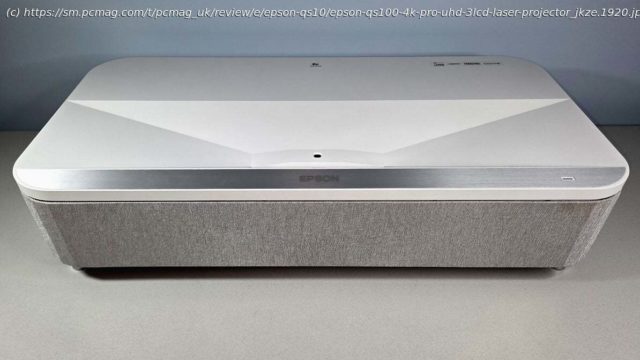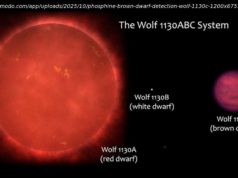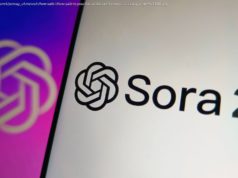The Epson QS100 delivers high enough brightness for rooms with ambient light, a rainbow artifact free image, and the high level of image quality—including color accuracy—that you’d expect from Epson’s premium line.
The QS100 4K PRO-UHD 3LCD Laser Projector is Epson’s first, and so far only, ultra short throw (UST) projector in its premium high-brightness Q-series line. Q-series projectors can stand up to ambient light, but they’re expensive. (The QS100 is $4,999.) Also, they are available primarily through contractors as part of custom home theater installations—the sort with a screen, external audio and streaming devices, and even an integrated remote control for the whole system. However, you can buy a QS100 to set up yourself, as essentially a brighter version of the Epson LS800, one of our top picks for mainstream UST projectors. It lacks the LS800’s built-in streaming and audio, but it adds the menu options needed for a full calibration, making the model particularly attractive for people who demand top-notch images and are willing to put in the effort to get them. All that earns the projector an Editors’ Choice designation. Design: Built to Throw Big, Bright Images From Up Close
The QS100, available in white or black, is just enough brighter than the LS800 to make a visible difference at any given image size. Epson rates its laser-phosphor light source at 4,500 ISO lumens and as having a 20,000-hour life at full power. The two models share essentially the same display technology, using three 1080p LCD chips (one for each primary color), and doubling the number of pixels on screen through pixel shifting.
As I’ve discussed in other reviews, this approach delivers only half as many pixels as are in a 4K (3,840-by-2,160-pixel) image. But it makes little to no difference in perceived detail compared with the pixel shifting most DLP projectors use to deliver a full 3,840 by 2,160 pixels. Part of the reason Epson’s approach works so well has to do with the limits of human visual acuity. At normal viewing distances, those limits hide any difference that might actually exist. Beyond that, the ability to resolve detail is also affected by contrast, lens quality, and digital image processing, among other variables, and Epson’s PRO-UHD technology takes advantage of those factors as well.
Another important plus for the three-chip design is that it guarantees the image can’t show rainbow artifacts (red/green/blue flashes that single-chip projectors can show). For those who don’t see these flashes, this won’t matter. But for those who see them easily and find them annoying, being rainbow-free can be a must-have feature, particularly if you’re laying out this much money for a projector.
Getting the projector up and running is straightforward, but positioning and image calibration can be a bit tricky. The QS100 weighs in at 26.5 pounds and measures 6.2 by 27.4 by 13.4 inches (HWD). Basic setup consists of little more than positioning it, connecting cables, turning it on, and focusing.






